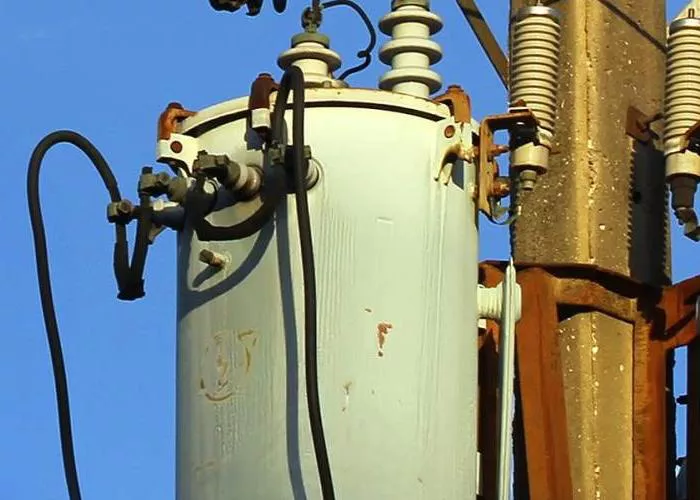Voltage stabilizers are essential devices used to maintain a steady output voltage, protecting electrical equipment from voltage fluctuations. These fluctuations can lead to reduced efficiency, overheating, or even permanent damage to appliances. Among the critical components of an automatic voltage stabilizer (AVS) is the transformer, which plays a pivotal role in regulating and stabilizing the voltage. This article delves into the type of transformer used in AVS systems, exploring its working principles, features, and advantages.
Understanding Voltage Stabilizers
Before diving into the specifics of the transformer, it’s important to grasp the purpose and functioning of a voltage stabilizer. A voltage stabilizer ensures that the output voltage delivered to connected devices remains constant, irrespective of variations in the input supply voltage. These devices are commonly used for sensitive appliances like air conditioners, refrigerators, computers, and medical equipment.
Key Functions of Voltage Stabilizers:
Voltage Regulation: Maintaining a consistent voltage output.
Overload Protection: Protecting appliances from sudden surges.
Noise Filtration: Eliminating electrical noise and harmonics from the supply.
The Role of Transformers in Voltage Stabilizers
Transformers are integral to the functioning of an automatic voltage stabilizer. They facilitate the adjustment of voltage levels to ensure the output remains within a desired range. The type of transformer employed in a stabilizer is typically an autotransformer due to its efficiency and compact design.
What Is an Autotransformer?
An autotransformer is a special type of transformer with a single winding that acts as both the primary and secondary winding. Unlike conventional transformers, which have separate primary and secondary windings, an autotransformer utilizes a common winding to transfer electrical energy. This design leads to improved efficiency, reduced size, and cost savings.
Working Principle of an Autotransformer
The working principle of an autotransformer is based on electromagnetic induction. When an alternating current (AC) passes through the winding, it creates a magnetic field. This field induces a voltage across the winding. By tapping into different points of the winding, the voltage can be adjusted.
Key characteristics of autotransformers include:
Step-Up or Step-Down Functionality: Voltage can be increased or decreased based on the tap position.
Compact Design: Fewer windings reduce the size and weight.
High Efficiency: Lower copper losses compared to traditional transformers.
Why Are Autotransformers Used in Automatic Voltage Stabilizers?
Autotransformers are particularly suited for voltage stabilizers due to their ability to handle varying voltage levels with precision. Below are the reasons why autotransformers are the preferred choice:
Voltage Adjustment Capability: The taps on the winding enable smooth voltage adjustments, crucial for stabilizing input fluctuations.
Efficiency: Autotransformers exhibit higher efficiency because they require less copper and core material.
Compact Size: Their compact design makes them ideal for household and commercial stabilizers.
Cost-Effectiveness: Reduced material usage translates to lower manufacturing costs.
Construction of the Transformer in an Automatic Voltage Stabilizer
The construction of an autotransformer in an AVS is designed to meet the specific requirements of voltage stabilization. Here’s a breakdown of its key components:
Core: The transformer core is made from laminated silicon steel to reduce eddy current losses and improve efficiency.
Winding: Copper or aluminum conductors form the winding, with multiple taps for voltage regulation.
Tap Changer: A motorized or relay-based tap changer switches between taps on the winding to adjust the output voltage.
Control Circuit: The control unit monitors the input voltage and signals the tap changer to maintain the desired output voltage.
Working of an Automatic Voltage Stabilizer with an Autotransformer
An automatic voltage stabilizer functions through the coordinated operation of the autotransformer, tap changer, and control circuit. Here’s a step-by-step explanation of its operation:
Input Voltage Sensing: The control circuit continuously monitors the incoming voltage.
Comparison: The sensed voltage is compared to a reference value.
Tap Adjustment: If the input voltage deviates from the set range, the tap changer adjusts the transformer taps to correct the output voltage.
Output Stabilization: The autotransformer delivers a stabilized voltage to the connected appliance.
Advantages of Using Autotransformers in Voltage Stabilizers
High Efficiency: Autotransformers are more efficient than traditional transformers, reducing energy loss during voltage regulation.
Compact Design: The smaller size of autotransformers makes them ideal for space-constrained applications.
Cost-Effective Manufacturing: Their simple construction leads to lower production costs, making voltage stabilizers more affordable.
Improved Performance: Autotransformers ensure quicker response times and better voltage stabilization.
Applications of Voltage Stabilizers with Autotransformers
The use of autotransformers in voltage stabilizers extends to various applications, including:
Domestic Appliances: Stabilizers for refrigerators, air conditioners, and televisions.
Industrial Equipment: Voltage regulation for machinery in factories.
Medical Devices: Protecting sensitive medical equipment like X-ray machines and MRI scanners.
Telecommunication: Ensuring stable power supply for communication networks.
Limitations of Autotransformers in Voltage Stabilizers
While autotransformers are highly effective, they have certain limitations:
Limited Isolation: Unlike traditional transformers, autotransformers provide limited electrical isolation.
Susceptibility to Faults: A fault in the common winding can impact the entire system.
Harmonic Distortion: Under certain conditions, autotransformers can introduce harmonics.
Alternatives to Autotransformers
In some cases, other types of transformers are used in voltage stabilizers, such as:
Isolation Transformers: For applications requiring electrical isolation.
Toroidal Transformers: Known for their compact size and low electromagnetic interference.
While these alternatives have their merits, autotransformers remain the most widely used type in automatic voltage stabilizers due to their superior efficiency and cost-effectiveness.
Conclusion
The type of transformer used in an automatic voltage stabilizer is predominantly an autotransformer, thanks to its efficiency, compactness, and cost-effectiveness. By leveraging its unique construction and functionality, autotransformers ensure reliable voltage regulation, protecting appliances and equipment from the adverse effects of voltage fluctuations. While they have some limitations, their benefits far outweigh the drawbacks, making them indispensable in the design of modern voltage stabilizers.
As the demand for stable power continues to grow, innovations in transformer technology will further enhance the performance and reliability of voltage stabilizers, ensuring a seamless supply of electricity for diverse applications.
Related Topics:
- What is the Most Popular Transformer?
- What Type of Pressure Washer Do You Need?
- What Does an Autotransformer Do?

